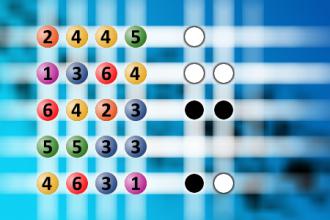What a winning combination?
The computer chose a secret code (sequence of 4 digits from 1 to 6). Your goal is to find that code. Black circles indicate the number of hits on the right spot. White circles indicate the number of hits on the wrong spot.Correct answers: 66
The first user who solved this task is Snezana Milanovic.
#brainteasers #mastermind

Six Quick Jokes to Kickstart Your Week with a Smile
Would it kill the makers of avocados to put a different toy inside?
I already have like 50 wooden balls already.
I can't believe I forgot to go to the gym yesterday.
That's 8 years in a row now.
Wife: "I just got stung by a jellyfish. quick, pee on it!"
Husband: [peeing on jellyfish] "This is for stinging my wife."
I hate it when my wife gets mad at me for being lazy.
It’s not like I did anything!
I have a contact lens problem.
I have no contact lens solution.
My wife rang me at the pub and said, “If you’re not home in 10 minutes, I’m giving the dinner I cooked you to the dog.”
I was home in 5 minutes.
I’d hate for anything to happen to the dog.

